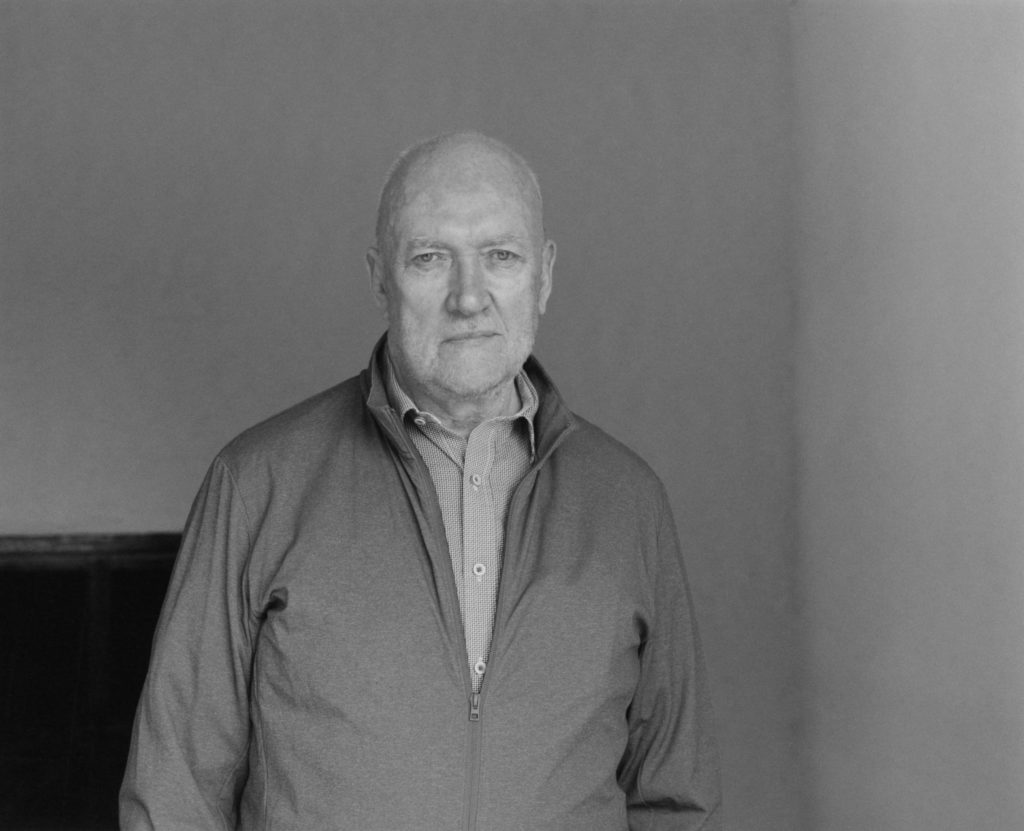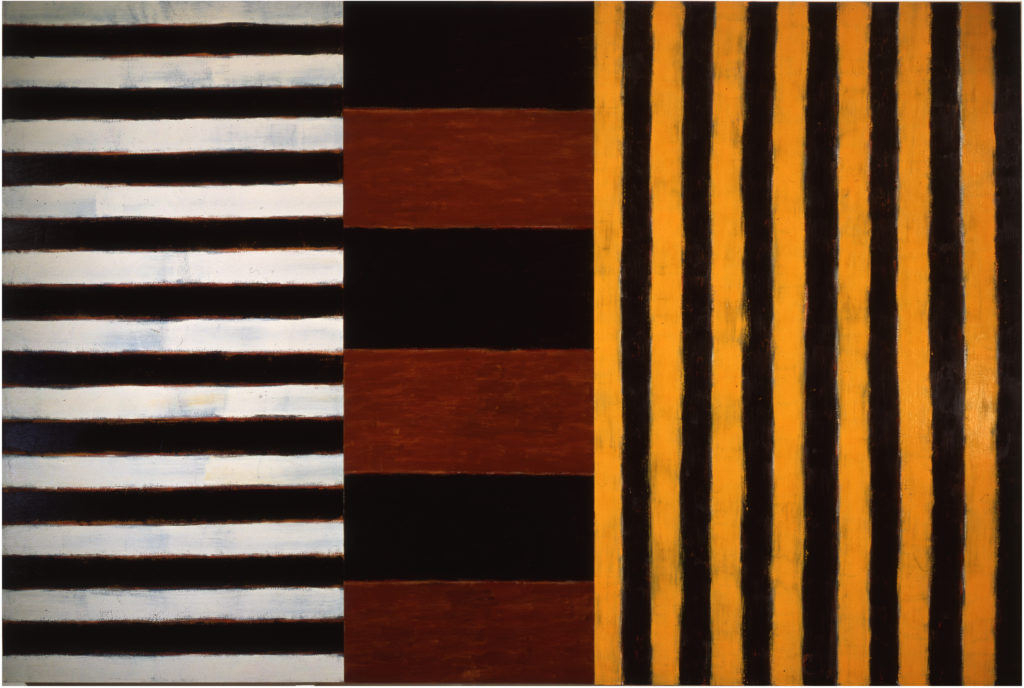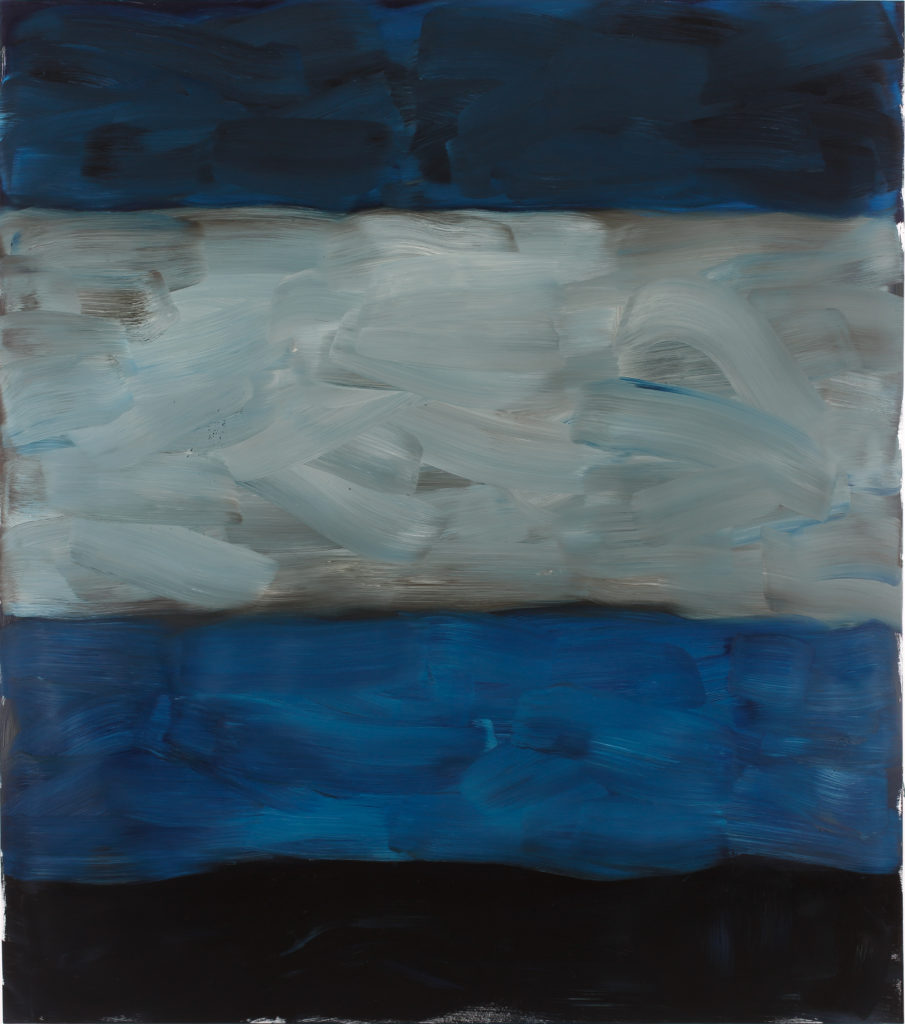A Legacy of Experimentation: Sean Scully at the Modern
The Modern Art Museum of Fort Worth recently opened an impressive retrospective of Irish artist Sean Scully’s work. The Shape of Ideas brings together work dating back to the 1970s, including paintings, pastels, prints, sketches, and watercolors. The curatorial team, led by Timothy Rub and Amanda Sroka of the Philadelphia Museum of Art, has chosen to tell the story of Scully’s legacy of abstract experimentation.

Portrait of Sean Scully, 2018. Image courtesy of the artist. Photo by Felix Friedmann. © Felix Friedmann
Many who have visited The Modern in the past may have noticed Scully’s large striped panels. The museum has approximately 20 of his pieces on hand. While it is their third show of his work, it represents the first retrospective anyone has shown since 1995.
Originally scheduled to open in Philadelphia in May of 2020, the show is finally making its way before audiences as the world slowly re-opens. Perhaps after a year in various forms of lockdown, these minimalist portals are an ideal way to reconsider art and how it feels to absorb it in these large spaces once again.
From his earliest projects into his more recent years, Scully has continually revisited themes, motifs, and concepts that unify his style while experimenting with elements that serve to bring new energy to the overall project.
A work that shows this process exceptionally well is “Harvard Frame Painting” from a 1972 fellowship that brought him to the United States. Following a trip there in 1969, the artist incorporated Moroccan influences of textiles utilizing felt strips. The rhythmic gestures of the crosshatch or chessboard resonate in many of the pieces, seen in the application of spray paint. The light dancing on the wall behind the work hints at the shadow play and grids persisting throughout the artist’s career.
A common language of line distills through all of the work regardless of the size or materials. It is an underlying conversation Scully seems to have with his work and that of other artists and writers, as he often references historical and literary artifacts.

Heart of Darkness, 1982, by Sean Scully. Oil on canvas, 8×12 feet. Art Institute of Chicago, Gift of Society for Contemporary Art, 1988.259. Image courtesy of the Art Institute of Chicago/Art Resource NY. ©Sean Scully.
Moments of discovery come in various forms: from insets that act as “paintings within paintings” to the found pieces of wood that illustrate time and the lives of objects. As the projects grow in size, these architectural, often improvisation panel pieces reward the patient eye that sits with them. One might make a note of wood from a Montauk barn he came across during an artist residency, which he utilized for “Heart of Darkness” from 1981.
Building on this sense of place is the “Wall of Light” series starting in the late 1990s, which bear an intense residue or trace of memory. Scully’s artwork is profoundly alive, colorfully reflecting, for example, a trip to Mexico. These pieces are triumphant and resonate with the deep architectural sensibility of his work, inviting the viewer to follow the passage of time as seen in light migrating across the surface of a wall. The various material textures represent a sort of “organized chaos.” They give off vibrant energy that organically gives way to the rich colors found in the “Doric” series, many of which are seen together for the first time.
With patterns reminiscent of Matisse, formal experimentation compelled by Picasso, and structural forms that recall the work of Ellsworth Kelly, Scully has continued to challenge himself.
The recurring motif of the checkerboard and mirror transform with the inclusion of different materials – like stucco. Progressing away from the feel of paint enhances the sense of layered architectural facades.

Landline North Blue, 2014, by Sean Scully. Oil on aluminum, 7 fee 1 inch x 6 feet 3 inches. Forman Family Collection. Image courtesy of the artist. Photographer: Robert Bean. © Sean Scully.
From one gallery to the next, one sees classical proportions and an ongoing discussion of reflection and rhythm, displayed perfectly by the “Landlines” series, dating back to the ‘70s. The bands of color are meditative and recall the abstract breakthroughs of Mark Rothko.
More recent work, including 2017’s “Yellow Ascending,” develop this sense of the work as a window into other spaces or worldviews. However, they are not obligated to specify anything further to the viewer about how to envision these portals.
Sean Scully: The Shape of Ideas will be on view through October 20th at The Modern Art Museum of Fort Worth. The show expands dramatically on The Modern’s collection of Scully’s work. It makes excellent use of the museum’s sightlines and heightens the complete sense one has as they walk through the artist’s career.
 An Austin native, Lyle Brooks relocated to Fort Worth in order to immerse himself in the burgeoning music scene and the city’s rich cultural history, which has allowed him to cover everything from Free Jazz to folk singers. He’s collaborated as a ghostwriter on projects focusing on Health Optimization, Roman Lawyers, and an assortment of intriguing subjects requiring his research.
An Austin native, Lyle Brooks relocated to Fort Worth in order to immerse himself in the burgeoning music scene and the city’s rich cultural history, which has allowed him to cover everything from Free Jazz to folk singers. He’s collaborated as a ghostwriter on projects focusing on Health Optimization, Roman Lawyers, and an assortment of intriguing subjects requiring his research.


 Sign in
Sign in

